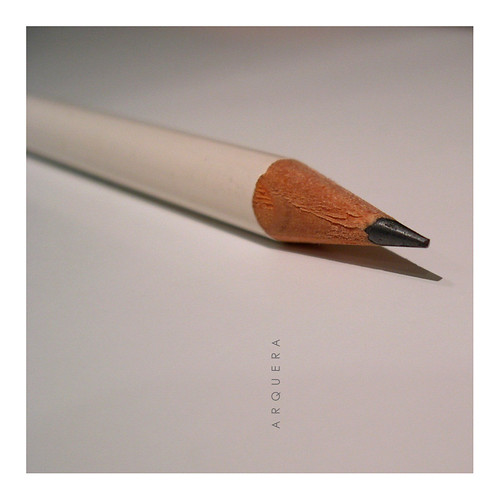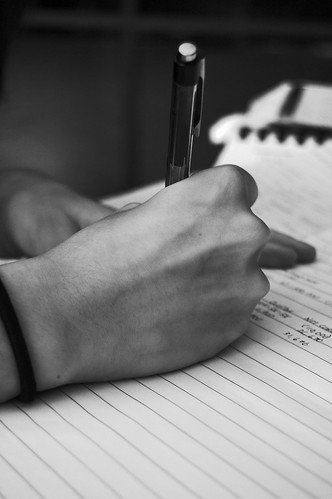Want a better grade on your paper?
This guide will help you organize your thoughts regarding an observed performance (specifically a dance performance)… it may prove helpful to you in preparing and writing your reaction to or critique of anything. In fact, I’ve even used bold print on statements of universal importance.
Those of you studying dance academically at the college or high school level have probably been (or will at some time be) asked to express in writing your reaction to a dance performance. These essays go by many names (observations, critiques, reactions), however, the format is generally the same – two pages of double spaced… what?
- What am I supposed to write about?
- How do I describe movement?
- What should I be looking for when I watch dance?
- How should I format the paper?
- What is expected of me?
Writing Your Reactions to a Performance

Preparation and Recording
- Develop some background knowledge. Read articles, class material, and descriptions of the dance company, artist, and/or dances you will be seeing. This little bit of additional knowledge can go a long way in helping you watch and write about the performance.
- Arrive early to the performance and read through any program notes and biographies.
- Keep a writing utensil handy to record notes in the program or in a pad of paper.
- Record keywords and phrases regarding what you see, feel, hear, and experience.
- Do not judge your own perceptions.
- Document details – movements, costumes, music, lighting, scenery, props – with descriptive words (adjectives and verbs) as they occur to you
- Look for shapes and patterns in the organization of movement or ideas.
- Are certain things repeated? Do the dancers move in lines or formations?
- Notice relationships between dancers, between objects, between parts of the body
- Is there distance between individuals or groups of dancers? Does the head follow the elbow in a turn or does the dancer focus outward, beyond himself?
- Observe your feelings and images that come to mind, and how they change (or not) throughout the piece
- Does the music make you tense or agitated? Do the movements remind you of popcorn one moment and falling leaves the next?
- How does the performance affect you and/or others in the audience?
- Look for shapes and patterns in the organization of movement or ideas.
Structuring Your Paper
- Look through your notes and recall the thoughts, images, and aspects of the dance that struck you.
- Are there themes or patterns in your responses?
- Were your reactions to certain works stronger than others?
- What stands out as you look at your notes?
- Determine what you will detail in your central paragraphs. Three or four paragraphs is usually appropriate. You may want to go ahead and draft these paragraphs, covering one or two dance pieces in detail or writing in depth about aspects of the performance (themes or motifs, costumes, lighting, etc.), for example. Each paragraph should have a clear focus and begins with a thought that sets up the supportive sentences that follow.
- Jot down a few thoughts or keywords that summarize this collection of paragraphs. This is helpful in creating your introductory and concluding paragraphs. Have you focused a lot on the color of things, be it in lighting, costume, or even mood of the pieces, for example? Again consider patterns as you seek to organize your thoughts.

Writing Your Paper
Your Introduction
Set the Scene — Include the name of the artist or company in your opening lines. Other possibilities include where and when and even under what conditions you are viewing the performance.
Your introduction should also set up the central paragraphs (the meat of your paper) with a thesis statement. A strong introduction will summarize in one or two sentences what is similar or related about the paragraphs ahead while giving the reader a sense of your prevailing reaction to the work. (For more on forming thesis statements see this article at the George Mason University website)
Your Observations
Use specific and descriptive language when writing about what you’ve seen.
- Use action words that imply a quality or attribute of the movement (slithered, sauntered, bounded, careened instead of rolled, walked, leaped, or turned)
- Use vivid adjectives to describe qualities of the lighting, costuming, or other elements (cast cheerless shadows, donned gaudy colors and fabrics, carved intricate pathways)
- Generally, you’ll want to write in the present tense. What you see, hear, feel, and sense rather than what you saw, heard, felt, etc. There are cases that past tense might be appropriate but choreography or performance work is best described as something that continues to exist rather than something that has ended or passed. Whatever you choose, be aware and try not to mix tense within the same paragraph or even within the same paper.
Include your interpretation of how the work(s) develop, how they change in mood, how the themes or mood of the piece is expressed.
When offering your opinions of a specific element or how effectively the work is carried out, support these with specific examples from the work (be wary of attempting to support opinion with blanket statements of belief – “The dancer is astonishing. She is an amazing turner and moves better than anyone else on stage.” vs. “The dancer is astonishing. Her turns have a serpentine fluidity, making her a standout every time she takes the stage.”)
Your Conclusion
Sum up your overall experiences and thoughts about the performance or restate your thesis in more detail.
Relate what you’ve seen to your study or past experiences
Reading, Revising, and Polishing Your Work
- Read what you’ve written aloud to yourself or a friend. Is your meaning clear and does it read smoothly?
- Leave the paper and then go back to it, reading and making any necessary revisions. Cut or tighten redundant (repetitive) statements, phrases, or paragraphs.
- Check spelling (particularly on the spelling of names and titles within the production) and proper punctuation.
- Be sure the paper is formatted to your instructor’s specifications before handing it in.
Remember, your reactions, feelings, and opinions are neither right or wrong, however, how well you express these in your writing will determine your grade.
Composing an effective observation essay about a performance takes preparation and an openness to receiving the dance presented.
Your state of mind when viewing a work can affect your perceptions so, try to be rested when you watch a performance, clearing your head of to-do lists or other extraneous thoughts.
I hope you find this guide helpful for drafting your performance critique or simply an assistance as you view dance.
Have you written an Observation/Reaction paper or critique?
If so, what are some things new writers might avoid?
If you are new to writing about performance, what are your questions?
Post them below!
If you are not writing about dance but have made it this far, there are other articles here you may find interesting or applicable to your studies, research, or career:
- College Days Ahead? Don’t Miss “College Parent Central”
- How to Conduct Oneself as a Professional – Part I
- How to Conduct Oneself as a Professional – Part II
- Strengths and Weaknesses
- Approaching Your Teacher or Studio Owner – useful tips for approaching anyone with an idea or suggestions
Nichelle Suzanne is a writer specializing in dance and online content. She is also a dance instructor with over 20 years experience teaching in dance studios, community programs, and colleges. She began Dance Advantage in 2008, equipped with a passion for movement education and an intuitive sense that a blog could bring dancers together. As a Houston-based dance writer, Nichelle covers dance performance for Dance Source Houston, Arts+Culture Texas, and other publications. She is a leader in social media within the dance community and has presented on blogging for dance organizations, including Dance/USA. Nichelle provides web consulting and writing services for dancers, dance schools and studios, and those beyond the dance world. Read Nichelle’s posts.

